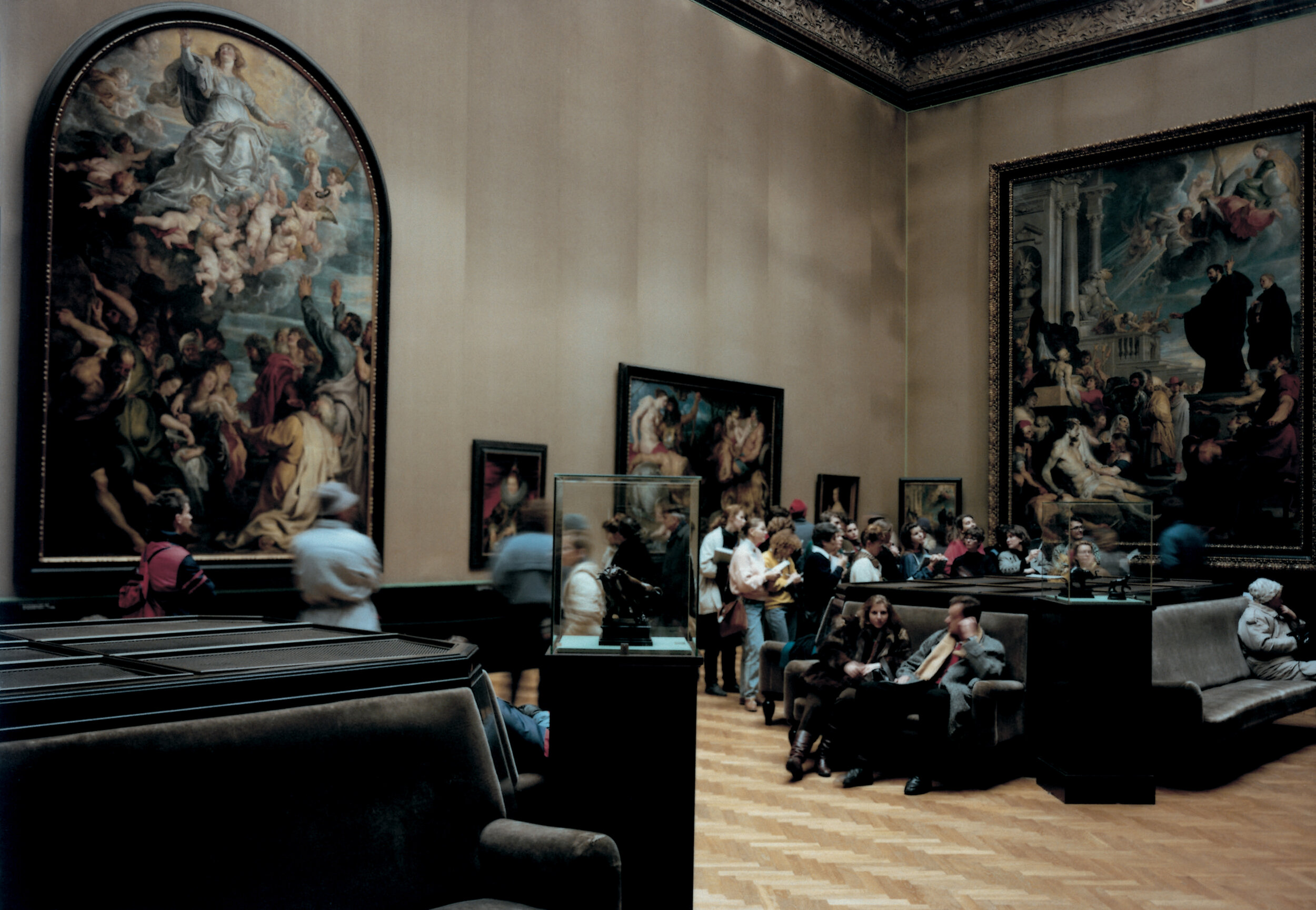







Curator’s selection from G II collection.
American, born 1954, Wayne , Michigan.
Daisy Blanket
1990
Knitted Wool, 5 dolls
212 x 150 cm
His work involved found objects, textile banners, drawings, assemblage, collage, performance and video. He is best known for his work with bonded hugs. Together with figures such as Martin Kippenberger and Rosemarie Trockel, he brought the postmodern to the visual arts. He often worked collaboratively and has produced projects with artists Paul McCarthy, Tony Oursler.

Curator’s selection from G II collection.
American, born 1928, Hartford.
Untitled Form Derived from a Cube
1991
Gouache on paper
106 x 131cm
He was an iconic American artist whose work helped to establish both Minimalism and Conceptual Art. Lewitt’s practice was based primarily within his own intellect, establishing a rubric of formal instructions which his assistants followed to create the works. Some of the artist’s most integral pieces are his Wall Drawings, in which he explored myriad variations of applying drawn lines onto walls. “When an artist uses a conceptual form of art, it means that all of the planning and decisions are made beforehand and the execution is a perfunctory affair. The idea becomes a machine that makes the art,” he wrote in his seminal 1967 essay Paragraphs on Conceptual Art.

Curator’s selection from G II collection.
Spanish, born 1953, Madrid
Two figures with two bars
1992
bronze (unique)
145 x 220 x 77 cm
He was a sculptor best known for his realistic figures installed in public spaces. Muñoz used a variety media, including paper-maché, resin, bronze, audio recordings, and painting to create his dynamic pieces, combining elements of sculpture and installation to blur the distinctions between reality and art. “I like to think of it as in this kind of space that exists between each of us and the rest of the world,” Muñoz has said. “It's like that moment when you switch off a light in a room and you say: ‘This is me, alone.’ Art is a wonderful place to feel like that.”

Curator’s selection from G II collection.
British, born 1964, Bristol (UK). Lives and works in London.
Joly
1995
Oil on canvas on artist’s frame
149 x 114 x 8 cm
In 1968, as an art student, Damien Hirst organised already exhibitions together with fellow artists, and was one of the most dynamic actors in the making of a complete new generation (Freeze).
Through some aspects of his art, he seeks to offend the onlooker, ritualizing death by using dead animals, but Hirsts art does not exclusively deal with this aspect of life.
In a work like Jolly, part of the Visual Candies, Hirst investigates into the way in which contemporary art is marketed. The natural cycle of birth-evolution-death on the one hand, and this obsession with the presentation, manipulation and marketing of contemporary art are the main breeding ground for his work.
The highly pleasant coloured patches this painting is constituted of refer also to this Dotpainting series, in which the artist creates a kind of alphabet, writing out he name of an anti depression drug in colorful dots. The frame in which the painting is set bears direct reference to the clean world of a chemist’s shop.

Curator’s selection from G II collection.
German, born 1954, Geldern. Lives and works in Karlsruhe.
Kunsthistorisches Museum I Wien 1989
1990
C-print on paper
180 x 234cm
Thomas Struth studies at the Dusseldorf Academy with professor Peter Kleemann. Then he took lessons with Gerhard Richter and learned photography with Bernd Becher. After a visit to New York, his work develops quickly.
Working in series, at the first the fringe of urban life is his most important subject: different European cities such as Naples, Rome, Geneva, the Ruhr area are visually explored as if the artist wanted to draw a kind of typology.
After a series on Tokyo, Struth turns to what he calls his Museum landscapes in which the artist investigates the complex relations between the museum’s place, the visitor and the artwork. His last series is about medicinal plants in a hospital garden in Winterthur.
He becomes, in 1993, Professor at the Staatliche Hochschule für Gestaltung in Karlsruhe.

Curator’s selection from G II collection.
American, born 1928, Hartford.
Untitled Form Derived from a Cube
1991
Gouache on paper
106 x 131cm
Richard Prince is part of the postmodern generation, including such Americian artists as Brauntuch, Kruger, Lawler, Levine, Longo,McCollum and others. He starts his career as appropriation artist, and is always very attracted to the advertising world.
The Marlboro cowboys, the girl-next-door-gags are subjects of this first series. From 1985 on he follows the ‘jokes’, painted jokes from the known American specialist Whitney Darrow, some of them illustrated; he also makes a series about car hoods of all-American cars.
